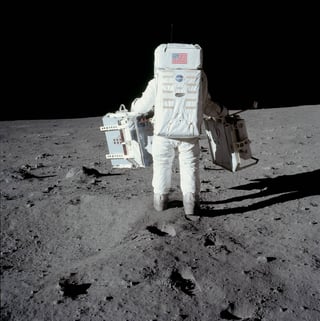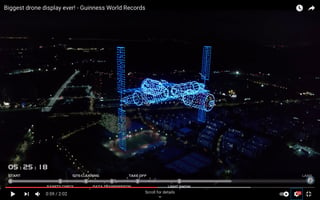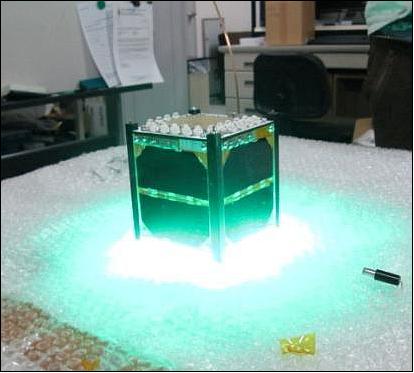Suppose we start with @SE-stopfiringthegoodguys's answer of 1000 km orbit but instead of making it solid and darkly and diffusely reflective like the Moon (albedo only 0.15-ish)


what if it produced its own light like a billboard?
For reference, the full moon is about magnitude -13 and the earthshine from the part we can see via reflected light from Earth is about magnitude -3.
But not to be outdone by the Moon let's stick with a brightness of -13.
Per How to make a green LED as visually bright as a 0 magnitude star? in Physics SE, I got that an object that appeared to be 0 magnitude in green light should illuminate the Earth with about $2.1 \times10^{-9} \ W/m^2$.
If it is roughly uniform over a cone with a half-width of 10°, then the LED produces $ 0.7 \ W/Sr$, or $ 0.7/r^2 \ W/m^2$ at a distance of $r$ meters.
That means I would have to move my 100 mA, 30% eQE 555nm LED with a 10° half-angle 18 kilometers away for it to look roughly as bright a 0 visual magnitude star!
For color dependence and an independent check, see also:
At a bias of say 3 volts, our LED needs 0.3 watts to be 0 magnitude at 18 km with a half-angle of 10°.
To be -13 mag at 1000 km over a 30° half-angle would then need about 500 megawatts.
It's hard to compete with astronomical objects. Stick with shiny things if you want a big solid billboard.
But if you can live with "a thousand points of light" then consider a group of LED-bearing cubesats.
At 450 km each satellite can shine as a 0 magnitude star over a 10° half-angle using only 7.5 watts which is a perfectly reasonable power load for a well designed and built 3U cubesat with solar panels and batteries to maintain much of the time.
If your "flock" of cubesats can communicate with each other or better yet see each other, then they can "fly" in formation like an LED drone show, which has a lot of pluses over a flat, static and boring billboard.


Screenshots from Biggest drone display ever! - Guinness World Records (click for larger)
From Have any satellites had lights visible from Earth besides FITSat-1?







